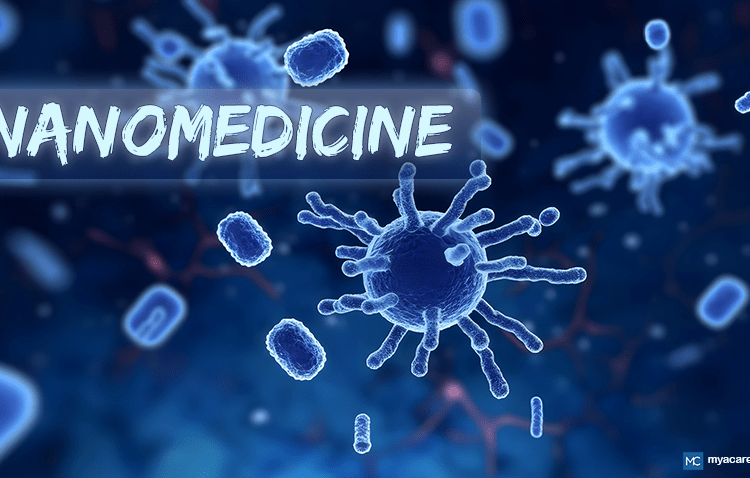Nanomedicine represents a cutting-edge field at the intersection of nanotechnology and medicine, promising revolutionary advancements in diagnostics, drug delivery, and therapeutic interventions. This article delves into the realm of what are nanomedicines, exploring their definition, applications, and transformative potential in shaping the future of precision healthcare.
What are Nanomedicines?
Nanomedicines refer to therapeutic and diagnostic applications of nanotechnology in healthcare. At their core, nanomedicines utilize nanoscale materials, typically ranging from 1 to 100 nanometers in size, to deliver drugs, imaging agents, or therapeutic payloads directly to targeted sites within the body. These nanoparticles are engineered with precise properties to enhance efficacy, reduce side effects, and enable personalized treatment strategies.
Key Characteristics of Nanomedicines
- Targeted Delivery: Nanoparticles can be functionalized to specifically target diseased cells or tissues, minimizing systemic exposure and maximizing therapeutic impact.
- Enhanced Bioavailability: Their small size facilitates penetration through biological barriers, improving drug absorption and distribution to target sites.
- Controlled Release: Nanomedicines enable controlled release of therapeutic agents over time, optimizing drug concentrations and reducing dosing frequency.
Applications of Nanomedicines
1. Cancer Therapy
Nanomedicines have revolutionized cancer treatment by overcoming traditional challenges such as poor solubility of drugs and systemic toxicity. Nanoparticles loaded with chemotherapy drugs can selectively accumulate in tumor tissues through passive targeting (enhanced permeability and retention effect) or active targeting (ligand-functionalized nanoparticles), delivering higher drug concentrations directly to cancer cells while sparing healthy tissues.
Additionally, nanomedicines in cancer therapy include the use of nanoparticles for photothermal therapy, photodynamic therapy, and RNA interference (RNAi) to inhibit oncogene expression, offering promising avenues for personalized cancer treatments.
2. Diagnostic Imaging
In diagnostic medicine, nanomedicines play a pivotal role in enhancing imaging modalities such as magnetic resonance imaging (MRI), computed tomography (CT), and fluorescence imaging. Nanoparticles labeled with contrast agents, fluorescent dyes, or magnetic nanoparticles improve imaging sensitivity and specificity, enabling early detection of diseases, monitoring of treatment responses, and precise localization of pathological changes within tissues.
3. Infectious Disease Management
Nanomedicines are also at the forefront of combating infectious diseases by delivering antimicrobial agents directly to infection sites. Nanoparticles loaded with antibiotics, antiviral drugs, or vaccines enhance therapeutic efficacy, overcome microbial resistance, and minimize systemic side effects associated with conventional therapies.
For instance, nanomedicines in infectious disease management include the development of nanoparticle-based vaccines that stimulate robust immune responses and targeted delivery of antimicrobial peptides to treat localized infections effectively.
Challenges and Considerations
Despite their immense potential, nanomedicines face several challenges that warrant careful consideration. Issues such as nanoparticle stability, biocompatibility, long-term safety profiles, and regulatory approval processes require rigorous research and development efforts. Furthermore, optimizing manufacturing processes and scalability while ensuring cost-effectiveness remains a critical focus for widespread clinical adoption of nanomedicines.
Moreover, ethical considerations surrounding patient consent, privacy concerns related to nanotechnology-enabled diagnostics, and equitable access to advanced nanomedicine therapies are pivotal in shaping ethical frameworks and policy guidelines.
Future Directions and Innovations
Looking ahead, the future of nanomedicines holds promising avenues for innovation and personalized healthcare solutions. Researchers are exploring novel nanomaterials, including biodegradable polymers, lipid-based nanoparticles, and hybrid nanocomposites, to enhance biocompatibility and therapeutic efficacy.
Additionally, advancements in nanotechnology, coupled with artificial intelligence (AI) and machine learning algorithms, are poised to revolutionize drug discovery, personalized treatment planning, and predictive modeling in healthcare. AI-driven platforms can analyze vast datasets of patient profiles, genetic markers, and environmental factors to tailor nanomedicine interventions based on individualized healthcare needs and treatment responses.
Conclusion
In conclusion, nanomedicines represent a transformative frontier in modern healthcare, offering unprecedented opportunities to revolutionize diagnostics, drug delivery, and therapeutic interventions. From targeted cancer therapies and enhanced diagnostic imaging to personalized infectious disease management, nanomedicines exemplify precision medicine’s potential to improve patient outcomes and quality of life.
As research advances and technological innovations evolve, interdisciplinary collaborations among scientists, clinicians, regulatory agencies, and industry leaders will be pivotal in harnessing the full potential of nanomedicines. By embracing the principles of nanomedicines, we embark on a journey towards a future where precision healthcare solutions are tailored to meet the unique needs of every individual, paving the way for transformative advancements in global health and well-being.

